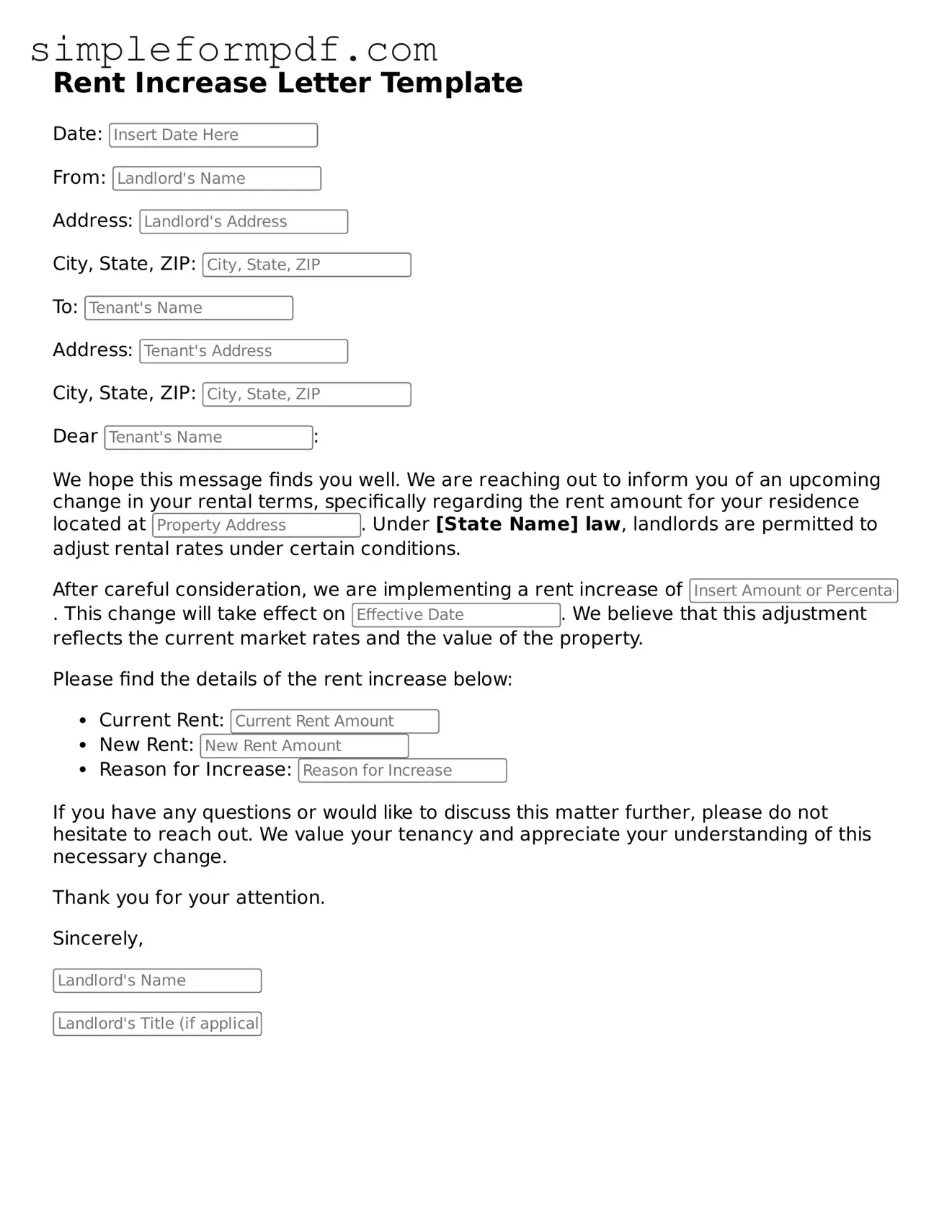Fillable Rent Increase Letter Template
A Rent Increase Letter is a formal document landlords use to notify tenants of an upcoming increase in rent. This letter outlines the new rental amount and the effective date of the change, ensuring transparency in the landlord-tenant relationship. Understanding this form is essential for both parties, as it helps facilitate a smooth transition during the rental adjustment process.
Ready to fill out your Rent Increase Letter? Click the button below to get started!
Launch Editor
